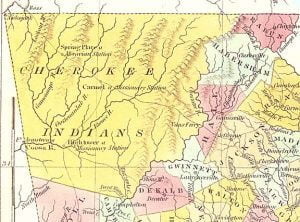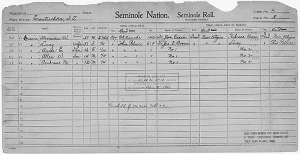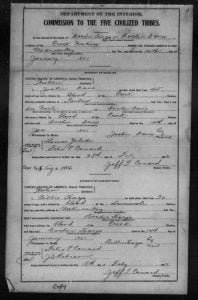1851 Old Settlers Roll
A listing of Cherokee still living in 1851 who were all ready residing in Oklahoma when the main body of the Cherokee arrived in the winter of 1839, as a result of the Treaty of New Echota (1835). Approximately one third of the Cherokee people were Old Settlers and two thirds new arrivals. The 1851 payroll lists Old Settlers (Cherokees who moved to Indian Territory prior to December 1835) entitled to participate in a per capita payment. There were 3,273 persons enumerated on this roll which is arranged by Cherokee district and grouped by family. Some persons who did not reside in the Cherokee Nation are listed as “Non-residents.” Three thousand, two hundred and seventy three Cherokees were enrolled and each received two hundred, seventy dollars and ninety five cents. The “Old Settlers” filed a protest against the sum. The Supreme Court decided that the original “Old Settlers” or their heirs would receive an additional one hundred, fifty nine dollars and ten cents per share in the 1896 “Old Settler” payment.





